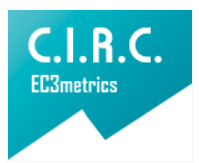SPEECH LANGUAGE PATHOLOGY MANAGEMENT OF THE STRUCTURAL AND FUNCTIONAL ALTERATIONS OF THE STOMATOGNETIC SYSTEM: BIBLIOGRAPHICAL STUDY
Alteraciones Estructurales y Funcionales del Sistema Estomatognático: Manejo fonoaudiológico [estudio biliográfico]
Main Article Content
Downloads
Publication Facts
Reviewer profiles N/A
Author statements
Indexed in
- Academic society
- Bogotá: Corporación Universitaria Iberoamericana
- Publisher
- Bogotá: Corporación Universitaria Iberoamericana
Article Details
Alvizua, V., & Quirós, O. (2013). Efectividad de la terapia Miofuncional en los hábitos más comunes capaces de producir maloclusiones clase II.
Bella, M. I. (2014). Estudio prospectivo de la funcion del sistema estomatognatico de niños con denticion temporaria, como predictivo de maloclusion en la denticion mixta.
Bertorello, A. (2013). Los efectos del tratamiento en niños que presentan maloclusión dentaria.
Concepción, C. O. L. V., Prieto, M. D. D., & Saez Luna, D. C. (2012). El Primer año de vida. Un reto necesario para la Estomatologia Actual.
Esquembre, R. B., Chade, M., Prigione, C., FernÁNdez, C., & Ronda, S. C. (2011). Síndrome del respirador bucal. Caracterización de un grupo de pacientes mendocinos. (Spanish). Revista de la Facultad de Odontología. Universidad Nacional de Cuyo, 5(1), 29-33.
Freire Salazar, K. (2012). Aspecto Clínico y Cefalométrico de Ricketts en Niños Respiradores Bucales Vs Respiradores.
García, J., Djurisic, A., Quirós, O., Molero, L., Alcedo, C., & Tedaldi, J. (2010). Habitos susceptibles de ser corregido mediante Terapias Miofuncionales. Revista Latinoamericana de Ortodoncia y OdontopediatrÃa [En Internet][Consulta 2012 sept. 31] Disponible en: http://www. ortodoncia. ws/publicaciones/2010/art21. asp.
Hernández Molinar, Y. (2010). Investigación de la Relación de Tejidos Blandos con el Crecimiento y Desarrollo en Pacientes Pediátricos. Revista Oral, 11(S2), 56-57.
Huamani, M., & Yaneth, C. (2012). Incremento de la frecuencia de la terapia orofacial sobre la evolución de las fases de la succión nutritiva en neonatos pretermino tardío de la unidad de cuidados intermedios de neonatología-hospital nacional Edgardo Rebagliati Martins de Abril-Junio del 2012.
Jaque Rocha, S., Jeldes Díaz, P., & Mieres Madrid, J. (2011). Valoración de movimientos orofaciales en menores de 3 a 4 años con desarrollo normal: datos normativos. Universidad de Chile.
Laboren, M., Medina, C., Viloria, C., Quirós, O., DJurisic, A. A. C., Molero, L., & Tedaldi, J. (2010). Hábitos Bucales más frecuentesy su Relación con Maloclusiones en niños con Dentición Primaria.
Podadera Valdés, Z. R., Flores Podadera, L., & Rezk Díaz, A. (2013). Repercusión de la respiración bucal en el sistema estomatognático en niños de 9 a 12 años. Revista de Ciencias Médicas de Pinar del Río, 17, 126-137.
Torres, A., & Martha, I. (2011). Manejo fonoaudiológico de los trastornos de ATM.
Villanueva, P., Morán, D., Lizana, M. L., & Palomino, H. M. (2009). Articulación de fones en individuos clase esqueletal I, II y III. Revista CEFAC, 11(3), 423-430.
Zaragoza-García, A., & Rizo-Ibarra, J. (2012). Respiración oral: etiología, características, diagnóstico y posibilidades terapéuticas. DIRECTORY/DIRECTORIO, 4(2), 43.

![Alteraciones Estructurales y Funcionales del Sistema Estomatognático: Manejo fonoaudiológico [estudio biliográfico]](https://arete.ibero.edu.co/public/journals/1/cover_article_1054_es_ES.jpg)
















